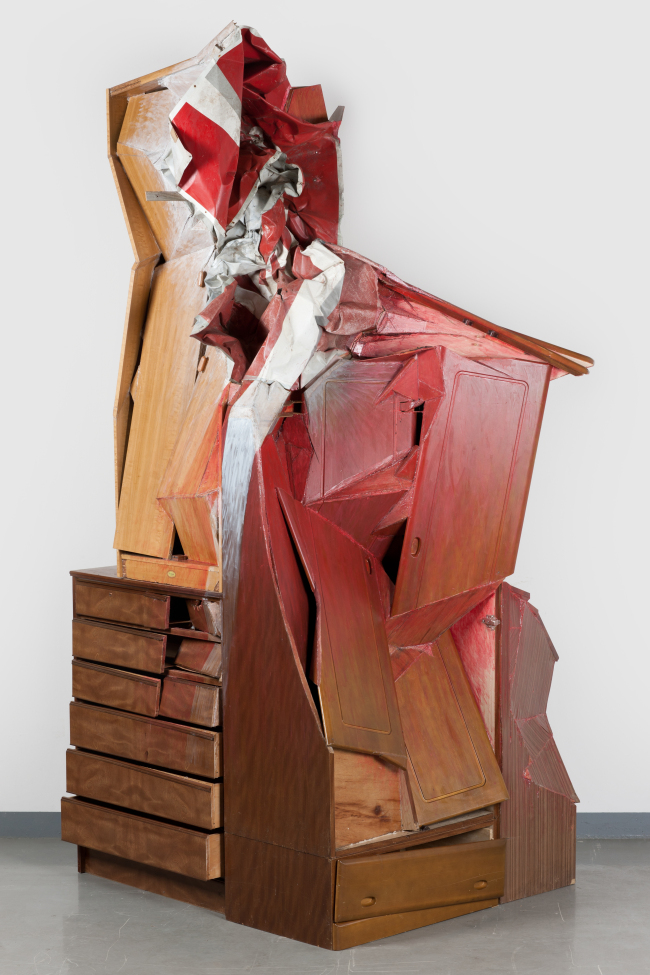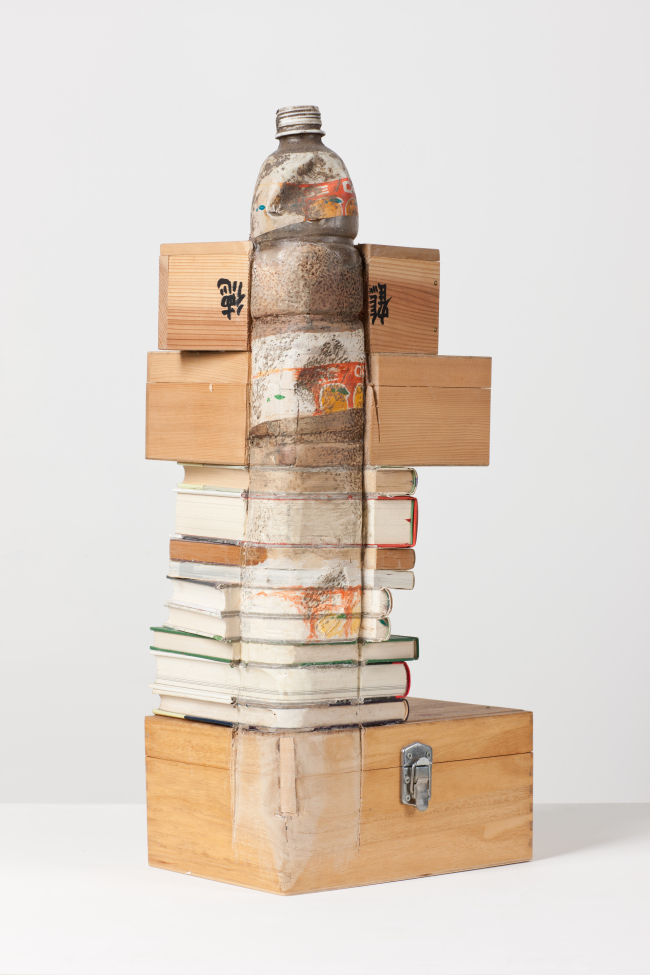‘Rebuilding broken lives’
Japanese artist Aono Fumiaki holds first Seoul exhibition showcasing installations made with broken objects collected from tsunami-hit areas
By Lee Woo-youngPublished : April 24, 2014 - 20:35
In the wake of disasters, people, whether directly involved or not, are affected in one way or another. For Sendai-based Japanese artist Aono Fumiaki, the 2011 Great East Japan Earthquake and Tsunami was an unforgettable disaster. The tsunami washed away parts of his studio and his wife’s family home, leaving only linoleum flooring and some bathroom tiles.
The artist started to collect debris and destroyed objects from tsunami-hit areas. He restored them, not to their original forms, but as repurposed art pieces. They are currently on view in his solo exhibition at Arario Gallery in Seoul.
The artist started to collect debris and destroyed objects from tsunami-hit areas. He restored them, not to their original forms, but as repurposed art pieces. They are currently on view in his solo exhibition at Arario Gallery in Seoul.

“The works I have created since the earthquake inevitably reflect my unavoidable reality, too. Whereas my past (pre-tsumani) works aestheticized everyday objects, I am now reminded of the happier days by pieces of destroyed objects. What I tried to restore are such memories and feelings,” wrote Aono in the exhibition catalogue for his Seoul exhibition.
Aono has been making installations using discarded objects for 20 years. He is a skillful mechanic when it comes to mending broken objects, having restored a torn cassette tape by replacing the missing part with wood and putting broken ceramics back together again.
“(But after the earthquake and tsunami) what matters more now is the restoration of the meaning rather than the form,” he said.
The artist collected junk scattered in the tsunami-hit areas, ranging from small objects like PET bottles, wooden boxes and books to larger ones such as the red Coca-Cola signboard. He then mixes the objects until they look seamless and incorporates furniture still in use.

On the site where his in-laws’ house used to stand, the artist tore up the light green linoleum and used it to cover a wooden table in his home. “I wanted to restore the lost life by adding broken objects to furniture we are using now, because people should continue to live despite the tragic incident,” the artist explained.
Another piece features a pile of books, wooden boxes and a discarded PET bottle he collected on the streets of Yuriage, Miyagi prefecture. The installation, which looks like a Buddhist stone pagoda, represents his “prayer for the souls lost in the tsunami.”
He attached a chest of drawers to a crumpled red Coca-Cola signboard. The result is the tower-shaped installation.
Aono has been in the spotlight since the 2013 Aichi Triennale, where he showed a destroyed boat from tsunami-stricken Ishinomaki City. He says the process of restoring the boat resembles “how we are rebuilding our broken lives.”
“The only thing an artist like myself could do (in the disaster) is create art every day and show what’s right in life through my works,” he said.
The exhibition runs through June 1 at Arario Gallery at Bukchon-ro 5-gil, Jongno-gu, Seoul. For more information, call (02) 541-5701.
By Lee Woo-young (wylee@heraldcorp.com)



![[Herald Interview] 'Amid aging population, Korea to invite more young professionals from overseas'](http://res.heraldm.com/phpwas/restmb_idxmake.php?idx=644&simg=/content/image/2024/04/24/20240424050844_0.jpg&u=20240424200058)














![[Today’s K-pop] Kep1er to disband after 2 1/2 years: report](http://res.heraldm.com/phpwas/restmb_idxmake.php?idx=642&simg=/content/image/2024/04/25/20240425050792_0.jpg&u=)